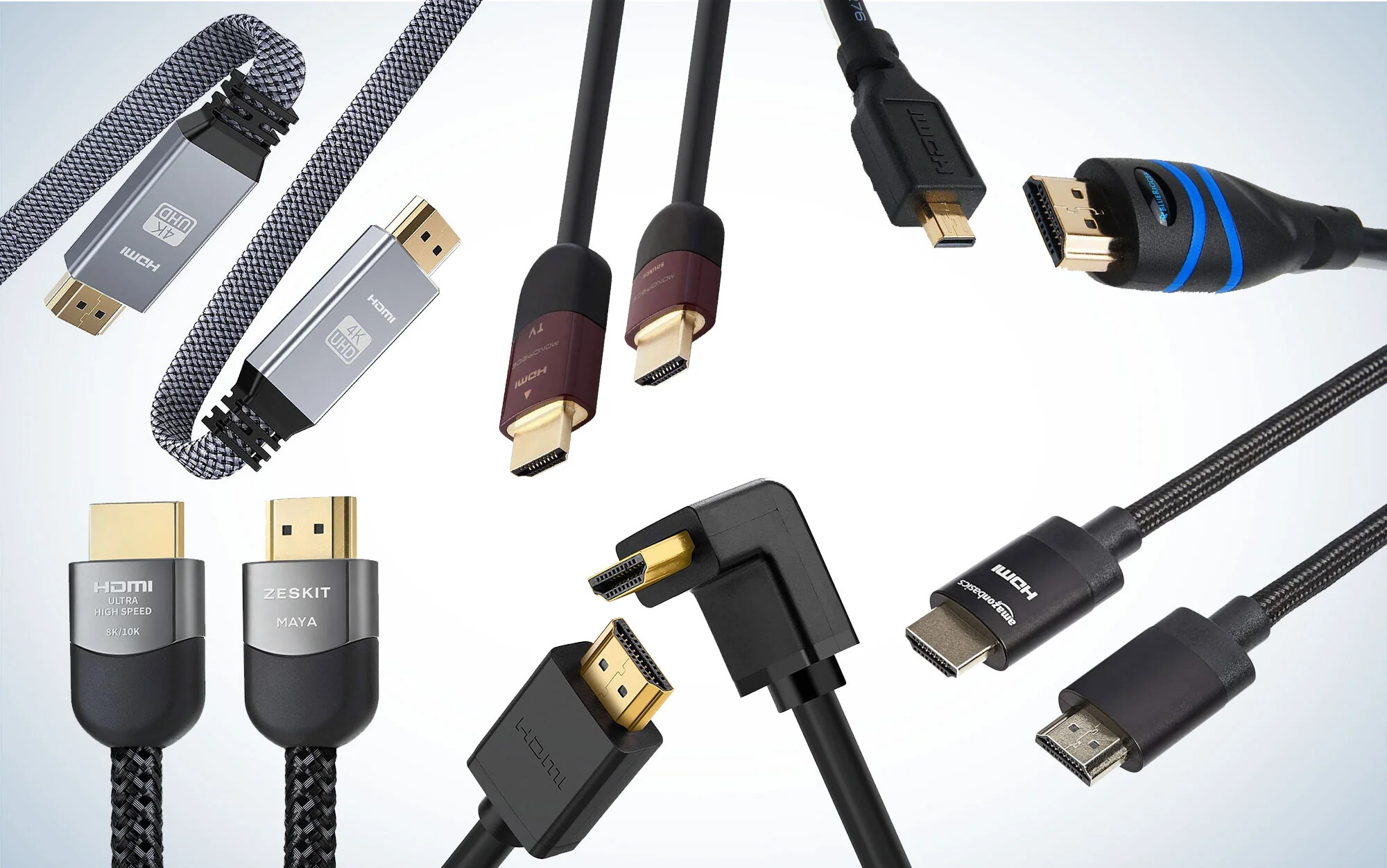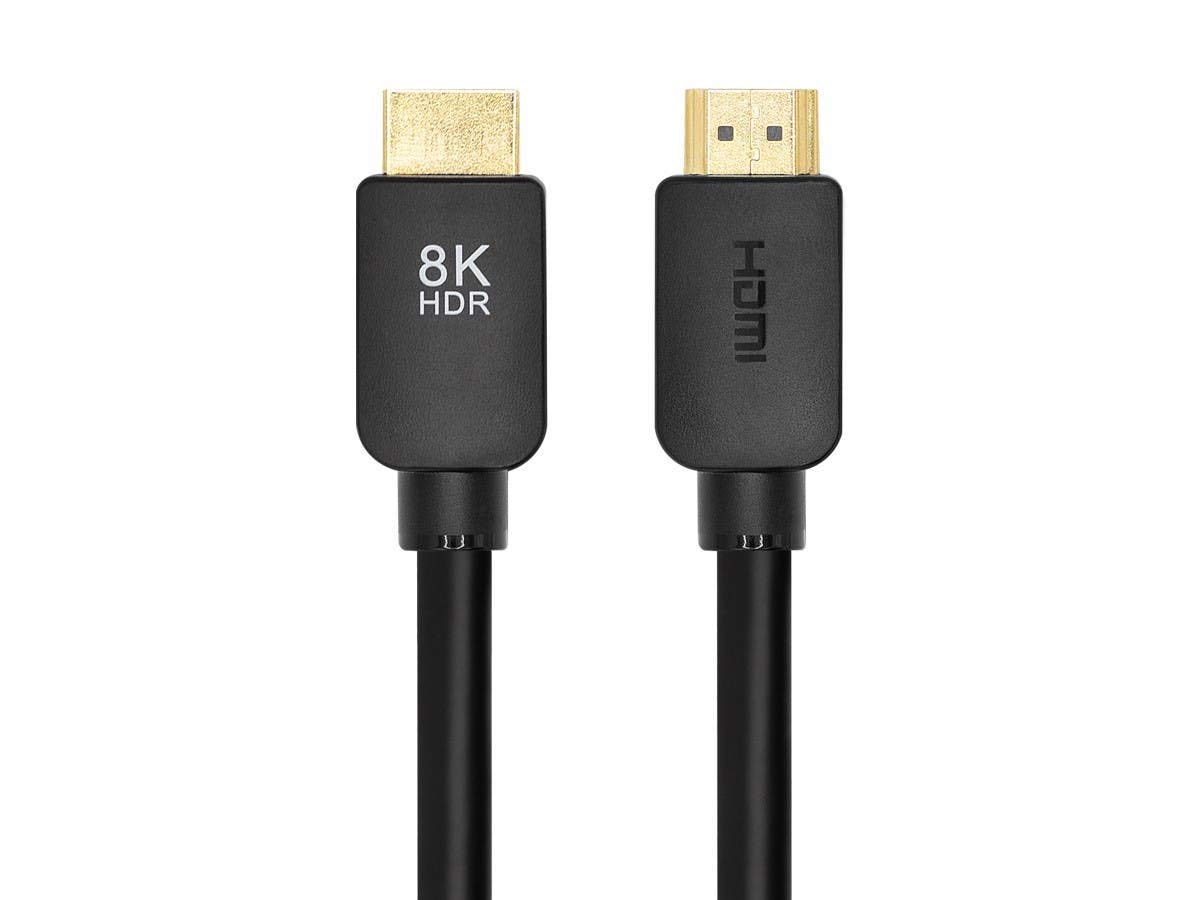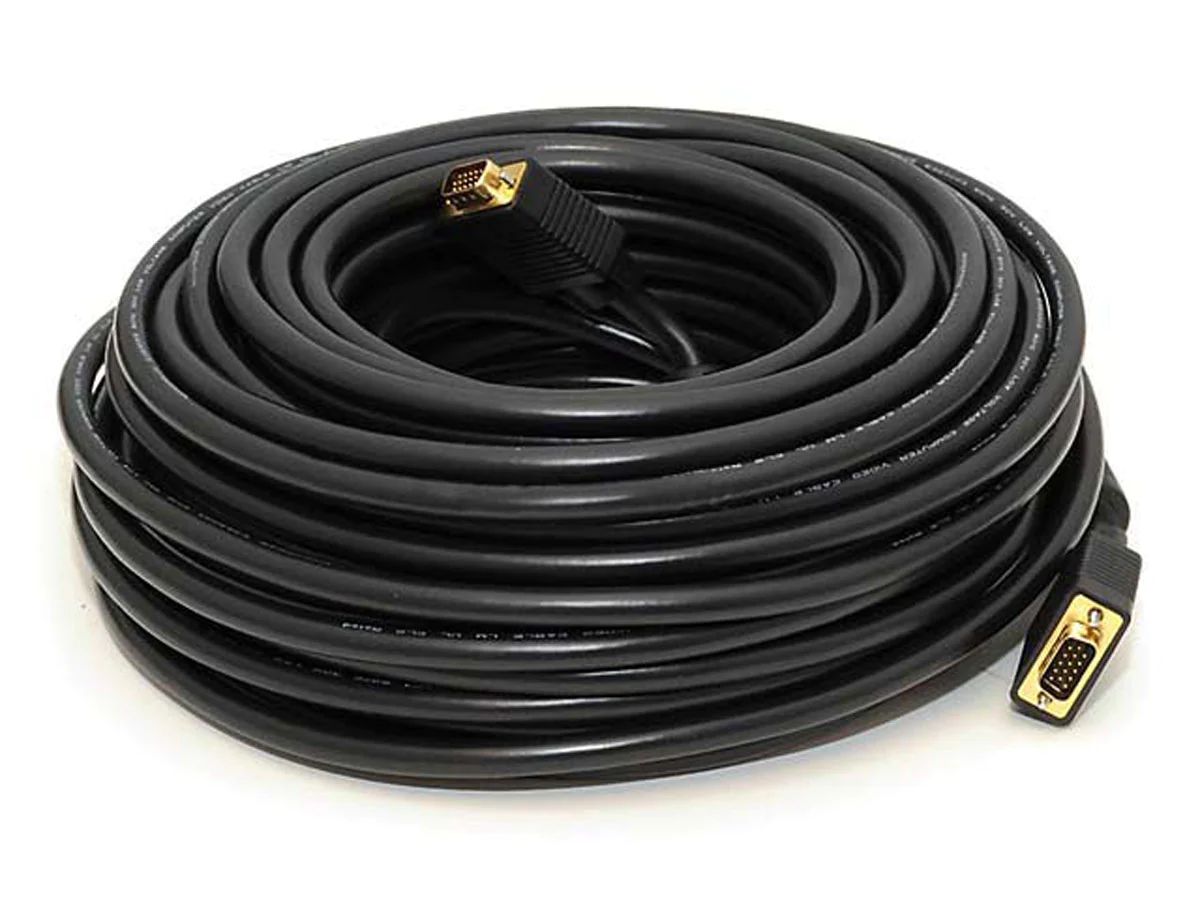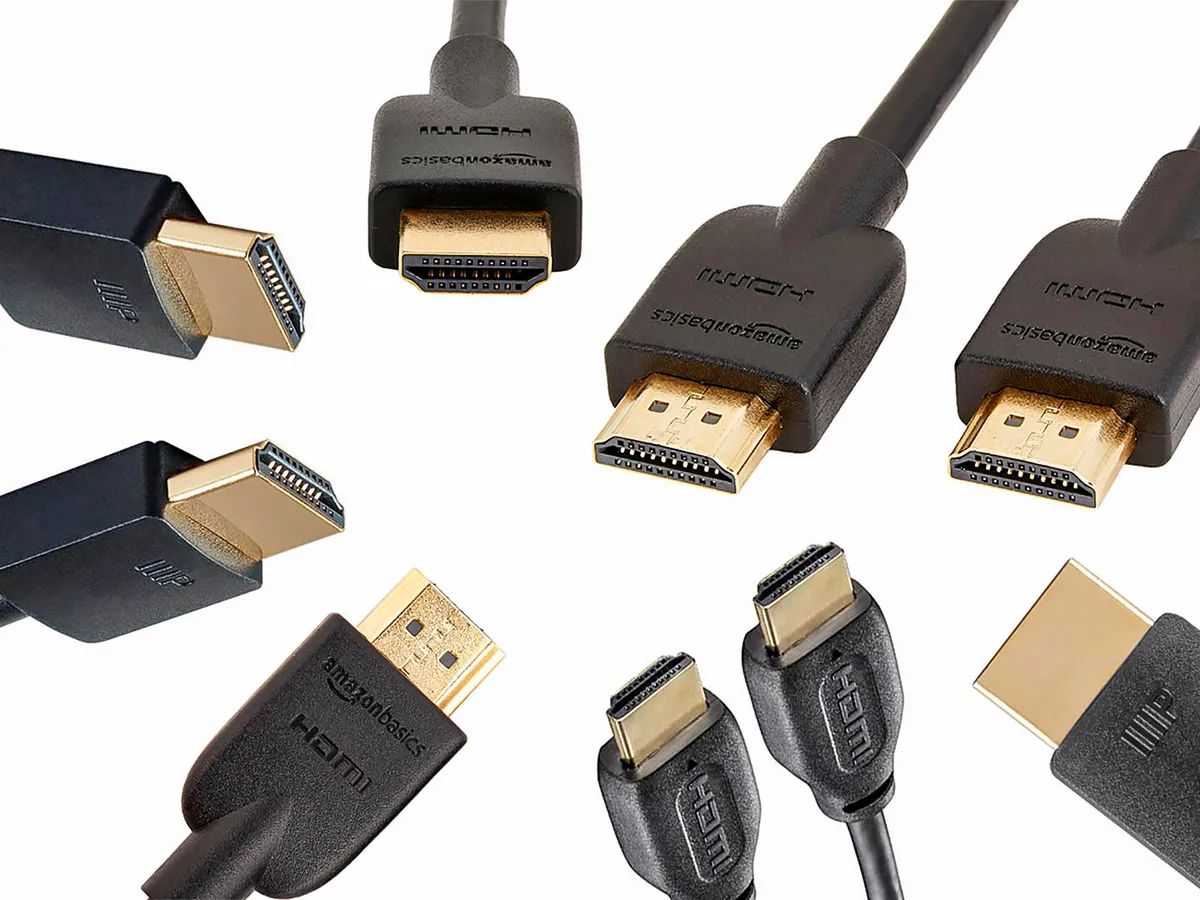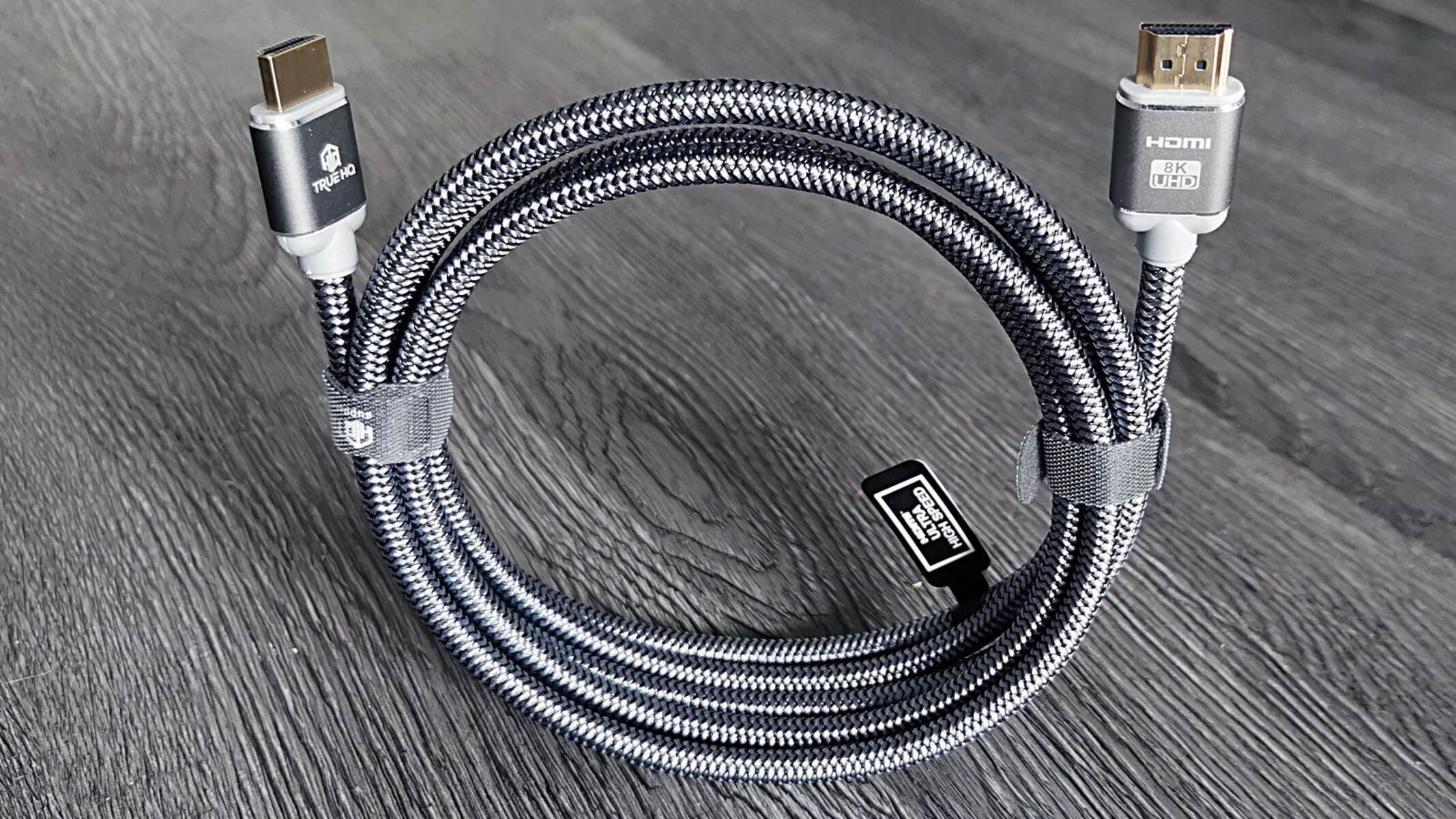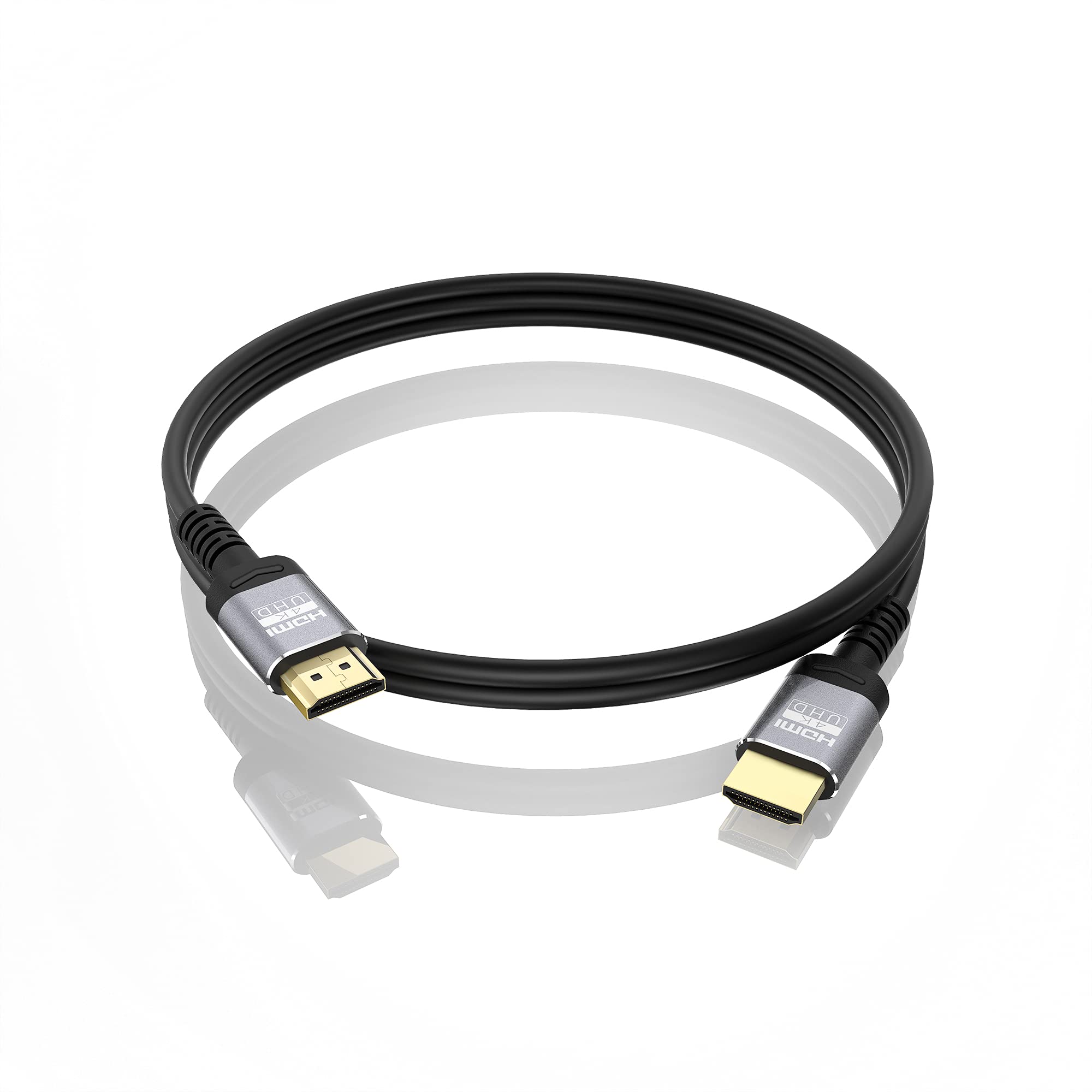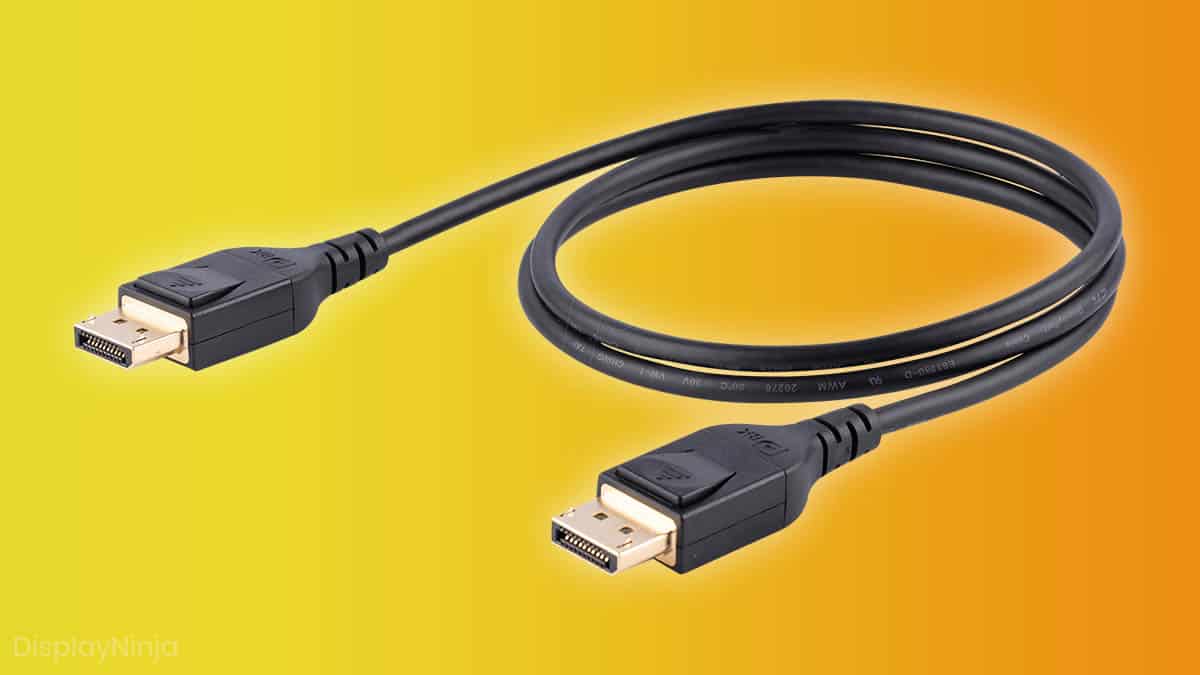Introduction
Welcome to the world of high definition audio and video! In today’s digital age, the demand for high-quality multimedia experiences has never been greater. Whether you’re streaming your favorite movies, playing video games, or connecting your devices to a big screen, having the right cables is essential to ensure optimal performance and picture quality.
One of the most commonly used cables for transmitting high definition audio and video signals is the High-Speed HDMI cable. But what exactly is a High-Speed HDMI cable, and why is it so important for your home entertainment setup? In this article, we will explore the ins and outs of High-Speed HDMI cables, unraveling the mystery behind their capabilities and benefits.
What Is HDMI?
HDMI stands for High Definition Multimedia Interface, and it is a standardized audio/video interface used for transmitting uncompressed digital data. HDMI cables are widely used to connect devices such as Blu-ray players, gaming consoles, streaming devices, and computers to high definition televisions or displays.
What Does “High-Speed” Mean?
When it comes to HDMI cables, you may come across different versions like Standard Speed, High Speed, and Premium High Speed. The term “High-Speed” refers to the cable’s ability to handle more data bandwidth, which is crucial for transmitting high-resolution video and multichannel audio formats.
How Does a High-Speed HDMI Cable Work?
A High-Speed HDMI cable uses multiple data channels to transmit audio and video signals simultaneously. These cables are equipped with advanced features like increased bandwidth, support for higher resolutions (up to 4K), and faster refresh rates, enabling a seamless and immersive viewing experience.
By utilizing digital technology, High-Speed HDMI cables ensure a pure and lossless transmission of audio and video signals. The digital information is transmitted in binary code, consisting of 0s and 1s, eliminating the need for analog-to-digital conversions and preserving the original quality of the content.
What Is HDMI?
HDMI (High Definition Multimedia Interface) is a technology that allows the transmission of high-quality audio and video signals from one device to another. It has become the standard interface for connecting various electronic devices such as TVs, monitors, DVD players, gaming consoles, and audio systems.
HDMI cables are designed to transmit uncompressed digital data, ensuring a high-fidelity connection between devices. Unlike analog connections, HDMI offers a digital transmission, resulting in a clearer and sharper audio and video output.
One of the key advantages of HDMI is its ability to transmit both audio and video signals in a single cable. This eliminates the need for multiple cables and simplifies the setup process. Additionally, HDMI cables support the transmission of high-definition content, making them ideal for enjoying movies, games, and other multimedia in stunning detail.
Furthermore, HDMI cables offer a wide range of compatibility. Most modern devices, such as Blu-ray players, computers, and gaming consoles, are equipped with HDMI ports, allowing for seamless connectivity without the need for additional adapters.
HDMI technology has evolved over the years, with each new version introducing enhanced features and capabilities. The latest version, HDMI 2.1, supports even higher resolutions (up to 10K) and refresh rates (up to 120Hz), as well as advanced video and audio formats like Dynamic HDR and Enhanced Audio Return Channel (eARC).
Overall, HDMI has revolutionized the way we connect and enjoy our audiovisual content. With its high-quality transmission, simplicity, and compatibility, HDMI has become the go-to standard for home entertainment systems and professional audiovisual setups alike.
Next, we will delve into the significance of the term “High-Speed” when it comes to HDMI cables and explore how it impacts their performance and capabilities.
What Does “High Speed” Mean?
When it comes to HDMI cables, you may come across terms like “Standard Speed,” “High Speed,” and “Premium High Speed.” These labels refer to the cable’s ability to handle different data bandwidths, which directly impacts the quality and capabilities of the audio and video signals being transmitted.
In the context of HDMI cables, the term “High Speed” indicates that the cable is capable of transmitting larger amounts of data at a faster rate compared to Standard Speed cables. This increased data bandwidth is essential for transmitting high-definition video and audio formats.
With the rapid advancements in technology, the demand for higher resolutions and enhanced audio formats has increased. High-Speed HDMI cables are designed to meet these requirements by supporting resolutions up to 4K Ultra HD, as well as advanced audio formats like Dolby Atmos and DTS:X.
Additionally, High-Speed HDMI cables have the capability to transmit content with higher refresh rates. This allows for smoother and more fluid motion in fast-paced action scenes, making it ideal for gaming and sports enthusiasts who seek an immersive and lag-free experience.
Moreover, High-Speed HDMI cables are often equipped with features like Deep Color and x.v.Color, which enhance the color reproduction capabilities of compatible devices. These features enable a wider color gamut, resulting in more vibrant and lifelike colors on your screen.
It is important to note that while High-Speed HDMI cables are backward compatible with devices that use Standard Speed HDMI cables, the reverse may not be true. If you have a device that supports 4K resolution or advanced audio formats, it is necessary to use a High-Speed HDMI cable to fully utilize the capabilities of your equipment.
Furthermore, High-Speed HDMI cables also support essential features like 3D video, Ethernet connectivity, and ARC (Audio Return Channel). The Ethernet feature allows you to connect compatible devices to the internet through the HDMI cable, eliminating the need for separate Ethernet cables.
In summary, the term “High Speed” in the context of HDMI cables signifies their ability to handle larger data bandwidth, enabling the transmission of high-quality audio and video signals. These cables support higher resolutions, faster refresh rates, enhanced color reproduction, and additional features like 3D and Ethernet connectivity, making them essential for enjoying the full potential of your multimedia devices.
How Does a High Speed HDMI Cable Work?
A High-Speed HDMI cable utilizes advanced technology and design to ensure a seamless transmission of high-quality audio and video signals. These cables are equipped with features that allow for efficient and reliable data transfer between devices.
One of the key components that make high-speed transmission possible is the high-bandwidth data channels within the HDMI cable. These channels carry the digital information, including the audio and video signals, from the source device to the display device.
High-Speed HDMI cables are designed to handle larger amounts of data, allowing for the transmission of high-resolution video and audio formats. This increased bandwidth ensures that all the details of the audio and video content are preserved, resulting in a crisp and immersive viewing experience.
The digital nature of HDMI technology eliminates the need for analog-to-digital conversions, which can cause signal degradation. The audio and video signals are transmitted in their original, uncompressed digital form, preserving the integrity and quality of the content throughout the transmission process.
The high-speed transmission capabilities of HDMI cables also enable features like fast refresh rates for smooth motion, deep color support for vibrant and accurate color reproduction, and advanced audio formats for immersive sound.
Another significant aspect of High-Speed HDMI cables is their ability to support multiple channels of data transmission simultaneously. This means that audio and video signals can be transmitted at the same time, eliminating any delays or synchronization issues.
Furthermore, High-Speed HDMI cables often incorporate features like bi-directional communication and CEC (Consumer Electronics Control). Bi-directional communication allows devices connected via HDMI to exchange information and control each other’s functions, providing a seamless user experience.
CEC, on the other hand, allows you to control multiple HDMI devices connected to your TV using a single remote control. With CEC-enabled components, you can turn on/off multiple devices, adjust volumes, and switch inputs without the need for separate remotes.
In summary, High-Speed HDMI cables work by utilizing high-bandwidth data channels to transmit uncompressed digital audio and video signals. These cables support larger amounts of data, resulting in the transmission of high-resolution content with faster refresh rates and accurate color reproduction. They also support advanced audio formats and incorporate features like bi-directional communication and CEC, enhancing the overall user experience.
Benefits of Using a High-Speed HDMI Cable
Using a High-Speed HDMI cable comes with a multitude of advantages that can greatly enhance your home entertainment experience. Let’s explore some of the key benefits:
1. High-Quality Audio and Video: A High-Speed HDMI cable ensures the transmission of uncompressed digital signals, resulting in superior audio and video quality. You can enjoy crisp, clear visuals with vibrant colors and immersive sound without any signal degradation or loss.
2. Support for High Resolutions: High-Speed HDMI cables support resolutions up to 4K Ultra HD, allowing you to enjoy your favorite movies, shows, and games in stunning detail. With 4K resolutions becoming increasingly popular, using a High-Speed HDMI cable ensures you’re ready to take full advantage of the latest display technologies.
3. Faster Refresh Rates: High-Speed HDMI cables enable faster refresh rates, resulting in smoother and more fluid motion on your screen. This is particularly important for gaming and sports enthusiasts who require rapid response times and want to experience action without any lag or ghosting.
4. Enhanced Color Reproduction: High-Speed HDMI cables often support features like Deep Color and x.v.Color, allowing for a wider color gamut and more accurate color reproduction. This results in richer, more vibrant visuals with greater detail and realism.
5. Advanced Audio Formats: With a High-Speed HDMI cable, you can experience immersive sound with support for advanced audio formats like Dolby Atmos and DTS:X. These formats provide three-dimensional audio, creating a more lifelike and captivating audio experience.
6. Simplicity and Convenience: High-Speed HDMI cables eliminate the need for multiple cables by transmitting both audio and video signals in a single cable. This simplifies your setup and reduces cable clutter, making it easier and more convenient to connect and disconnect devices.
7. Compatibility: High-Speed HDMI cables are designed to be backward compatible with devices that use older HDMI versions, ensuring seamless connectivity regardless of the device’s age. This means you can connect your new 4K TV to your older Blu-ray player without any issues.
8. Future-Proof Solution: Investing in a High-Speed HDMI cable ensures that you are prepared for future technologies and advancements in audio and video formats. Rather than needing to upgrade your cable in the future, you can enjoy the benefits of the latest features without any limitations.
Overall, using a High-Speed HDMI cable provides a range of benefits, including improved audio and video quality, support for high resolutions and faster refresh rates, enhanced color reproduction, convenience, compatibility, and future-proofing. These advantages make High-Speed HDMI cables a valuable addition to any home entertainment setup.
Factors to Consider When Choosing a High-Speed HDMI Cable
When selecting a High-Speed HDMI cable, it’s important to consider a few key factors to ensure that you choose the right cable for your specific needs. Here are some factors to keep in mind:
1. Bandwidth Rating: Check the bandwidth rating of the HDMI cable. While High-Speed HDMI cables are designed to handle higher bandwidths, it’s essential to ensure that the cable you choose meets the specific requirements of your audio and video devices.
2. Cable Length: Determine the appropriate length for your setup. Consider the distance between your audio/video source and the display device, and choose a cable that is long enough to connect the two without unnecessary strain or excess cable length that can potentially impact signal quality.
3. Build Quality: Look for a High-Speed HDMI cable that is well-constructed and durable. Cables with gold-plated connectors and sturdy, high-quality materials tend to provide better signal transfer and have a longer lifespan.
4. Compatibility: Ensure that the High-Speed HDMI cable is compatible with the devices you intend to connect. Most HDMI devices use the standard HDMI Type-A connector, but some devices, like laptops or smartphones, may require adapters or different types of HDMI connectors.
5. Supported Features: Take into account the specific features and capabilities you require for your setup, such as 4K resolution, HDR support, or advanced audio formats. Check if the cable is certified to support these features to ensure optimal performance and compatibility.
6. Price and Brand: Consider your budget and choose a reputable brand that offers a reliable HDMI cable. While it’s not necessary to spend a fortune on a cable, it’s also important to avoid extremely cheap cables that may compromise on quality and performance.
7. Customer Reviews: Read customer reviews and feedback to get an idea of the cable’s performance and reliability. Pay attention to reviews from users who have similar devices or requirements to yours to gauge if the cable will meet your expectations.
8. Return Policy and Warranty: Check the return policy and warranty offered by the manufacturer or retailer. This provides peace of mind in case you encounter any issues with the cable or if it does not meet your expectations.
By considering these factors, you can make an informed decision and choose a High-Speed HDMI cable that meets your specific requirements. Remember to take into account the particular needs of your audio and video setup to ensure optimal performance and enjoyment of your multimedia content.
Common Myths and Misconceptions About High-Speed HDMI Cables
With the abundance of information available about HDMI cables, it’s important to separate fact from fiction. Let’s debunk some common myths and misconceptions surrounding High-Speed HDMI cables:
1. Expensive HDMI Cables Provide Better Performance: One of the most prevalent myths is that expensive HDMI cables offer superior performance compared to more affordable options. In truth, as long as the cable meets the necessary specifications for your devices, there will be no noticeable difference in performance between a high-priced cable and a reasonably priced one.
2. All HDMI Cables Are the Same: While it is true that all High-Speed HDMI cables have the capability to transmit high-quality audio and video signals, there can still be variations in build quality, durability, and supported features. It’s crucial to choose a reputable brand that meets the necessary requirements for your specific setup.
3. Old HDMI Cables Are Obsolete: HDMI technology has evolved over the years, with new versions introducing enhanced features and capabilities. However, older HDMI cables can still work perfectly fine for the majority of setups. As long as the cable is High-Speed HDMI and meets the necessary specifications for your devices, it can still provide excellent performance.
4. Gold-Plated Connectors Offer Better Performance: Some HDMI cables come with gold-plated connectors, and there is a common misconception that this enhances performance. In reality, gold-plated connectors primarily offer better corrosion resistance and a more reliable connection. However, they do not affect the overall performance or signal quality of the cable.
5. Longer HDMI Cables Result in Signal Degradation: It is often believed that using longer HDMI cables can lead to signal degradation and loss of quality. In truth, up to a certain length, HDMI cables can effectively transmit high-definition signals without any noticeable degradation. However, for longer distances, it’s important to choose a cable with appropriate specifications and consider using signal boosters or HDMI extenders if required.
6. HDMI Cables Require “Break-In” Period: Some people believe that HDMI cables need a “break-in” period before they can deliver optimal performance. This notion is not backed by scientific evidence. HDMI cables can provide consistent performance right from the start, and there is no need for any specific break-in period.
7. Higher-Priced HDMI Cables Are Always Certified: Contrary to popular belief, the price of an HDMI cable does not guarantee it is certified. HDMI certification is a process that ensures the cable meets the necessary specifications for optimal performance. It’s important to look for cables that are HDMI certified, regardless of their price.
8. HDMI Cables Enhance Picture Quality: HDMI cables are designed to transmit the audio and video signals in a digital format without any loss or distortion. While they play a crucial role in the quality of the transmission, they do not inherently enhance the picture quality. The quality of the content and the capabilities of the display device primarily determine the picture quality.
By dispelling these common myths and misconceptions about High-Speed HDMI cables, you can make informed decisions when selecting and using HDMI cables for your audio and video setup. It’s important to rely on accurate information and choose cables that meet the necessary specifications and requirements of your devices.
Conclusion
High-Speed HDMI cables play a crucial role in delivering high-quality audio and video signals in our modern digital world. They have become the standard interface for connecting various devices to TVs, monitors, and audio systems, allowing us to enjoy immersive multimedia experiences.
Throughout this article, we have explored the fundamentals of HDMI technology, the significance of the “High Speed” label, and how these cables work to transmit audio and video signals. We have also discussed the benefits of using High-Speed HDMI cables, including high-quality audio and video, support for high resolutions and faster refresh rates, enhanced color reproduction, and compatibility with advanced audio formats.
When choosing a High-Speed HDMI cable, it is important to consider factors such as the bandwidth rating, cable length, build quality, compatibility, and supported features. By making an informed decision based on these factors, you can ensure optimal performance and seamless connectivity in your home entertainment setup.
We have also addressed common myths and misconceptions surrounding High-Speed HDMI cables, debunking notions such as the need for expensive cables, the obsolescence of older cables, and the importance of gold-plated connectors. By understanding these misconceptions, you can make informed choices and avoid unnecessary expenses.
In conclusion, High-Speed HDMI cables are essential for transmitting high-quality audio and video signals, providing us with stunning visuals and immersive sound experiences. By choosing the right cable and understanding the capabilities and limitations, you can unlock the full potential of your audio and video devices, ensuring an enjoyable and seamless entertainment experience.







